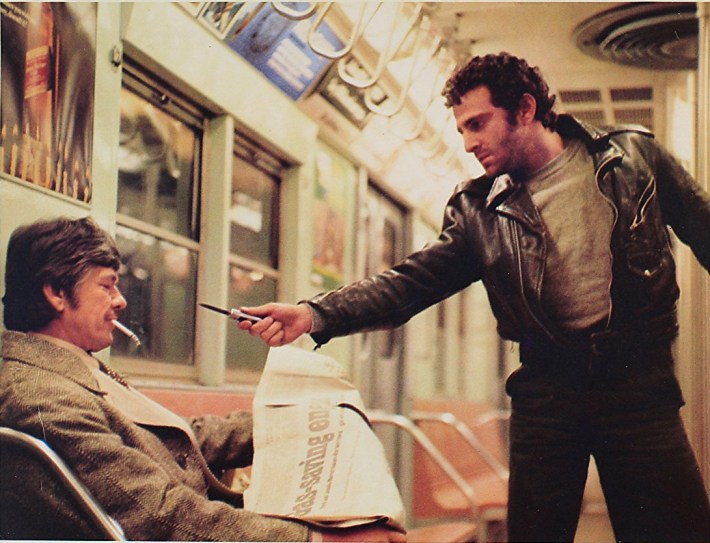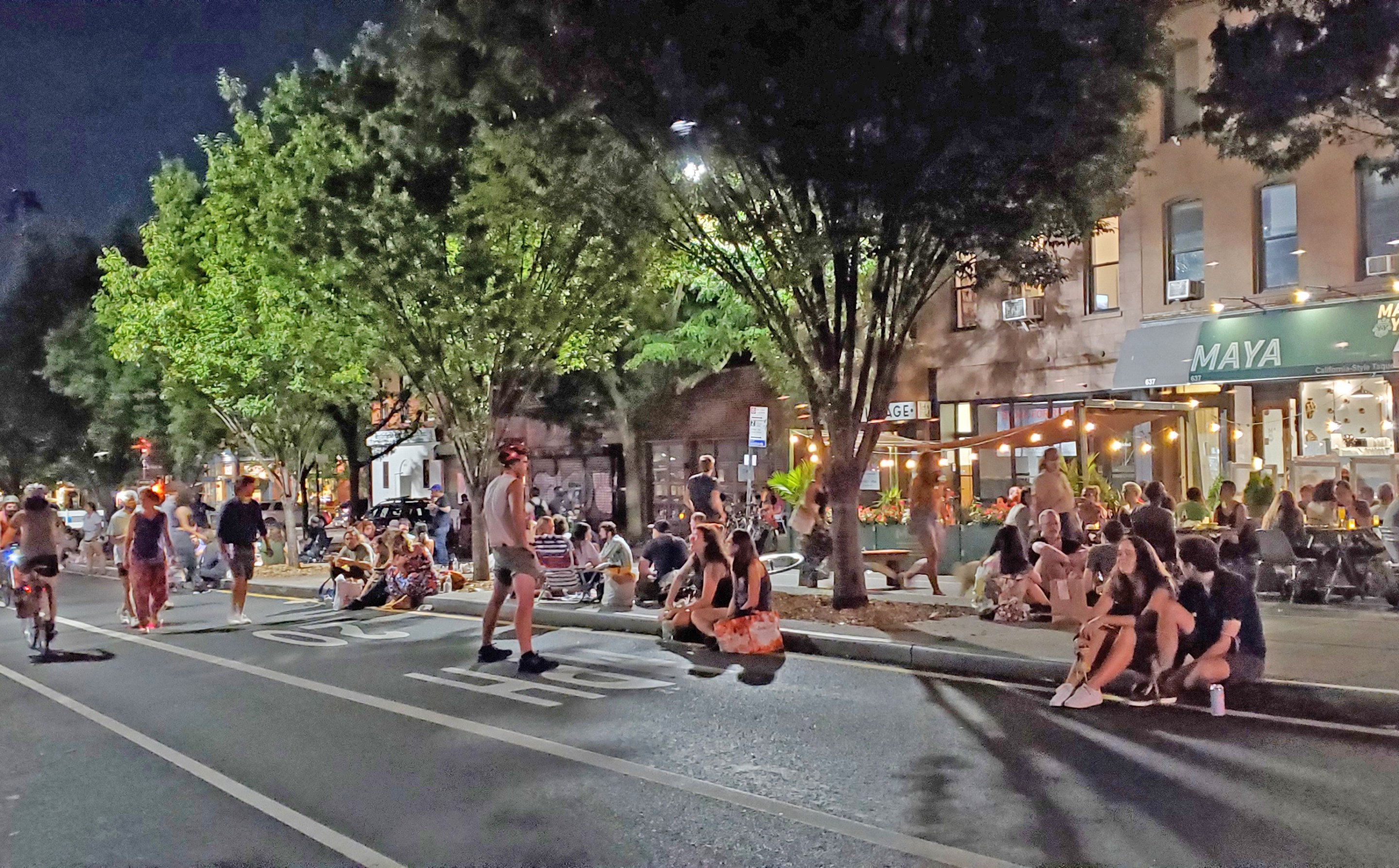I recently visited New York City for the first time, and was dazzled by how remarkably safe and vibrant the Big Apple felt at all times of the day. Back home in San Francisco, the relatively vacant Market Street area has long been uninviting after hours. Downtown Oakland is somewhat average by American downtown standards of being a ghost town once the office workers are gone.
But when I arrived to Lower Manhattan late at night, I was genuinely at a loss of words. On Fox News, the pundits insist that New York City is some hell-hole akin to the 1980s "Death Wish" series, but it's not. It’s without a doubt the safest major American city I’ve ever been to in my life. Statistics support that New York City is remarkably safe, compared to most U.S. cities, and it's because of one key reason: people.
I landed in New York City around evening time and headed over to my friend’s home in Tribeca. Predictably, an urbanist like me was drooling at the frequent subway, the pleasant ride from Penn Station and the active nightlife on Chambers Street. It must’ve been 8 p.m. and nightlife isn’t unusual in California or any other major American city I’ve been to in the west or south that has a popular strip.

But I was restless, and at 11 p.m. I decided to go exploring Lower Manhattan on foot and by train. There were so many people out in all neighborhoods, which was very unusual for me to see. Lower Manhattan was very lively on a late and normal Thursday night. People of all ages and backgrounds out and about. Tourists gawking around the World Trade Center. Elderly couples eating at restaurants around Pumphouse Park. Kids roaming around scooters on West Street and protected by a well designed bike lane.
Even pre-pandemic in the Bay Area, it's a struggle to find anywhere as lively as this at night absent a festival or concert. And there was a feeling I had never experienced before, that I never expected to feel outside someplace like Tokyo or Seoul and certainly not in an American city at midnight. Safety. The presence of so many people after hours, so many food stands, street vendors, so many open stores, bodegas and bars made the area so safe. Whereas in most places you feel the need to be on guard for a mugging or thief at this time at night, there was enough people around to discourage it. The presence of people would at least ensure that someone could help you in a crime or emergency, if not outright intervene.

Initially, I thought the safety was from the large amount of police officers. There were cops everywhere walking around Lower Manhattan — particularly at the World Trade Center. There was also a lot of private security officers and skyscrapers with personnel just sitting around. New York City has a police force that's double the size of the national average, per capita, and they’re not all roaming around exclusively in patrol cars like out west.
But safety is not merely a matter of police presence. Matter of fact, it wasn’t primarily the police presence as it dwindled further away from World Trade Center area and cops on foot patrol became much less common. It was the people.
During my whole trip, I never spent more than seven minutes tops on a subway platform, with the average time being two to three minutes. This was at midnight, mind you. Back in the Bay Area, I’m accustomed to waiting 15 minutes or more for a BART train, especially late at night, when they run over 25 minutes right in downtown San Francisco. I’m used to having to wait a half-hour for my bus to arrive and glancing back and forth at the club or bar, waiting for the five-minute mark to be up so I can depart. Waiting outside for a bus late night is lonesome, particularly as strangers fly by in their cars and the sidewalks are empty just a block from a venue.
But New York is leagues ahead of that. The trains and buses were so frequent you don’t spend much time idling around. More importantly, transit was populated after hours. After midnight, I saw people of all ages and in various groups riding the subway. The New York City subway is so much older and decayed than modern train systems out west, but the two million people using the subway keeps way more eyes on the public than any amount of anti-crime surveillance technology can.
After hours, most train stations in San Francisco, Portland or Los Angeles lowly populated, especially post-pandemic. It’s a circular effect where the substandard frequency of transit encourages people to drive and take Ubers so fewer people ride it. Fewer riders means less money which means fewer trains. Thus you feel much more vulnerable to being a victim of a crime or stalking because you’re one of few transit riders. In New York City you’re never alone.
After a late-night Broadway show, my girlfriend wanted to stay out longer but I had gotten tired and wanted to go back to our loft. I did something that in every other city in the U.S. I had never done. I didn't bother accompanying her back after midnight on transit. I’ve heard many horror stories from female and non-binary friends about riding transit, particularly when they’re alone. Recall my article on the subject. A tech CEO I’m friends with discussed how he had to offer Lyft and Uber subsidies to female and non-binary employees after hours due to being harassed often. Most women in my life have told me that harassment stops when I’m around due to my size and men being more respectful of other men than the women they harass. Thus, she and I would’ve insisted on riding transit together, but in New York City for the first time, we didn’t feel I needed to.
Something that quickly stuck out was how many unaccompanied women were riding transit alone in New York well into the night. By no means am I suggesting women face no harassment in New York City. But the safety provided by the "eyes on the street" theory seems to be partially borne out by the prevalence of women taking public transit alone. Something you do not see with anywhere as much frequency in most other American cities, even with high transit ridership.
As I took a stroll in Brooklyn one late night, I was intensely jealous of New York City. I was jealous of a city that seemed more alive after hours than in the daylight. I was jealous that I could go to a corner store at almost any time of the day. I was jealous of a public transportation system that was well used and reliable.
New York City of course had its many flaws. It needs to build way more housing and politically seems seven to 10 years behind California in coming to that realization. The subway, while impressive, had poor accessibility standards. Drivers in Manhattan were some of the worst I’ve ever seen anywhere. It’s unclear why the city invests so much in the nation’s best public transportation only to allow suburbanites to speed through neighborhood streets that should be pedestrianized. What kind of moron drives down Broadway of all places? And of course, New Yorkers don’t appear to know what a trash can is.
Street safety is not completely hopeless for the rest of the nation. There have been proposals to allow bars to stay open later in California, for example. San Francisco piloted a very successful “night market” which destigmatized the night with shopping, vendors and events after hours. But leaving New York City was very hard. I’m contending with the fact that I feel as though I found the promised land and I’m sticking around in the wrong place.
But at least now I know my theory on public safety is true: safety comes in numbers.






